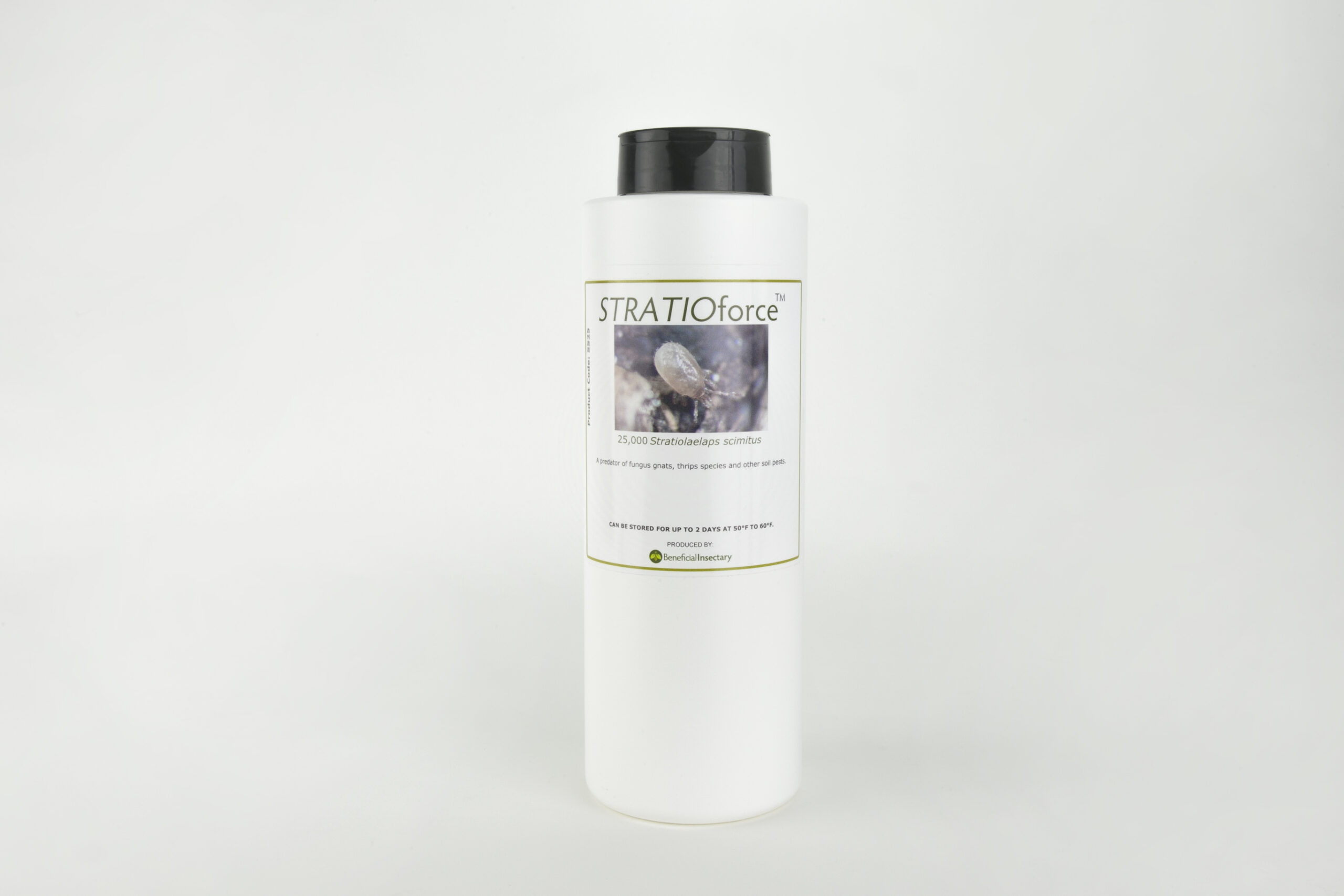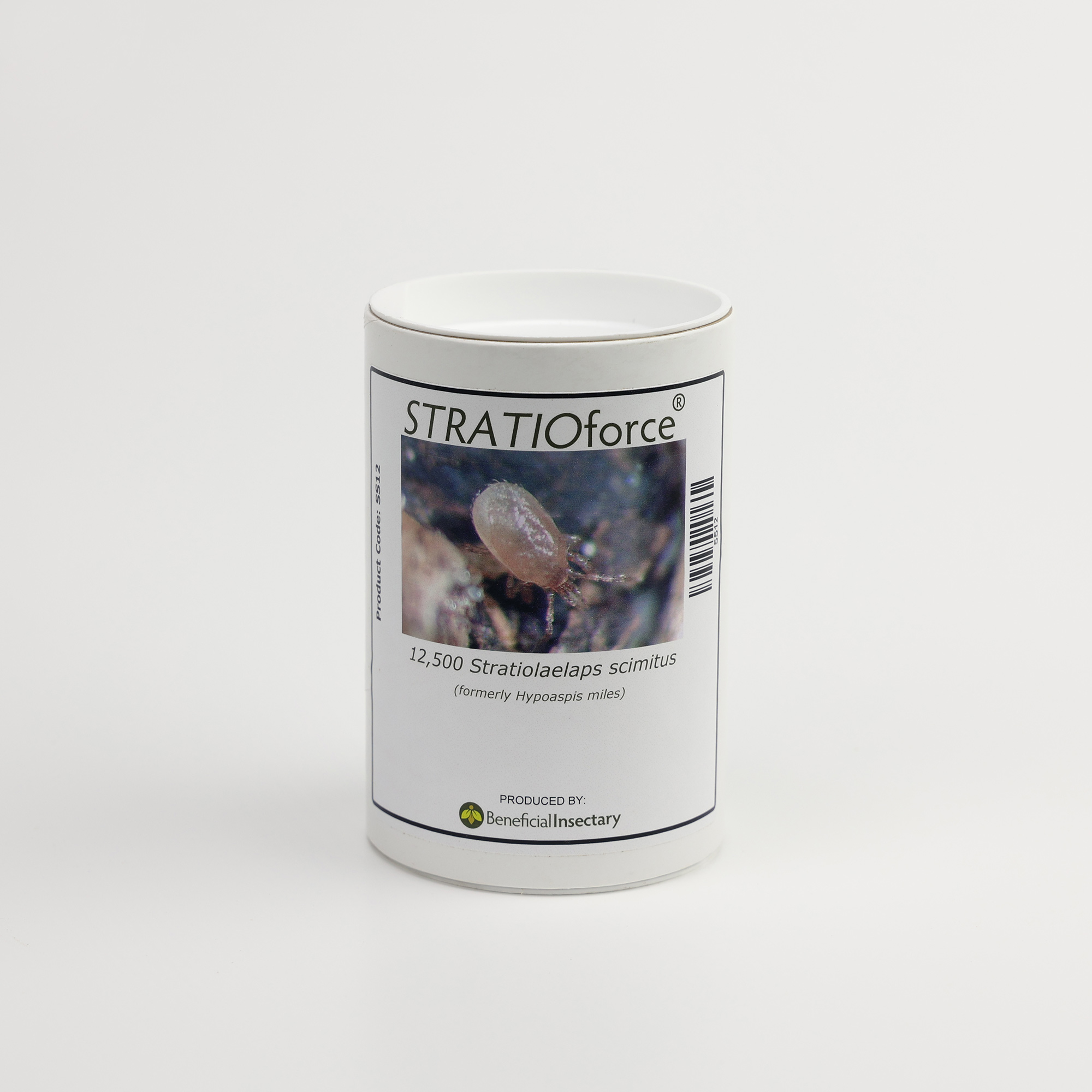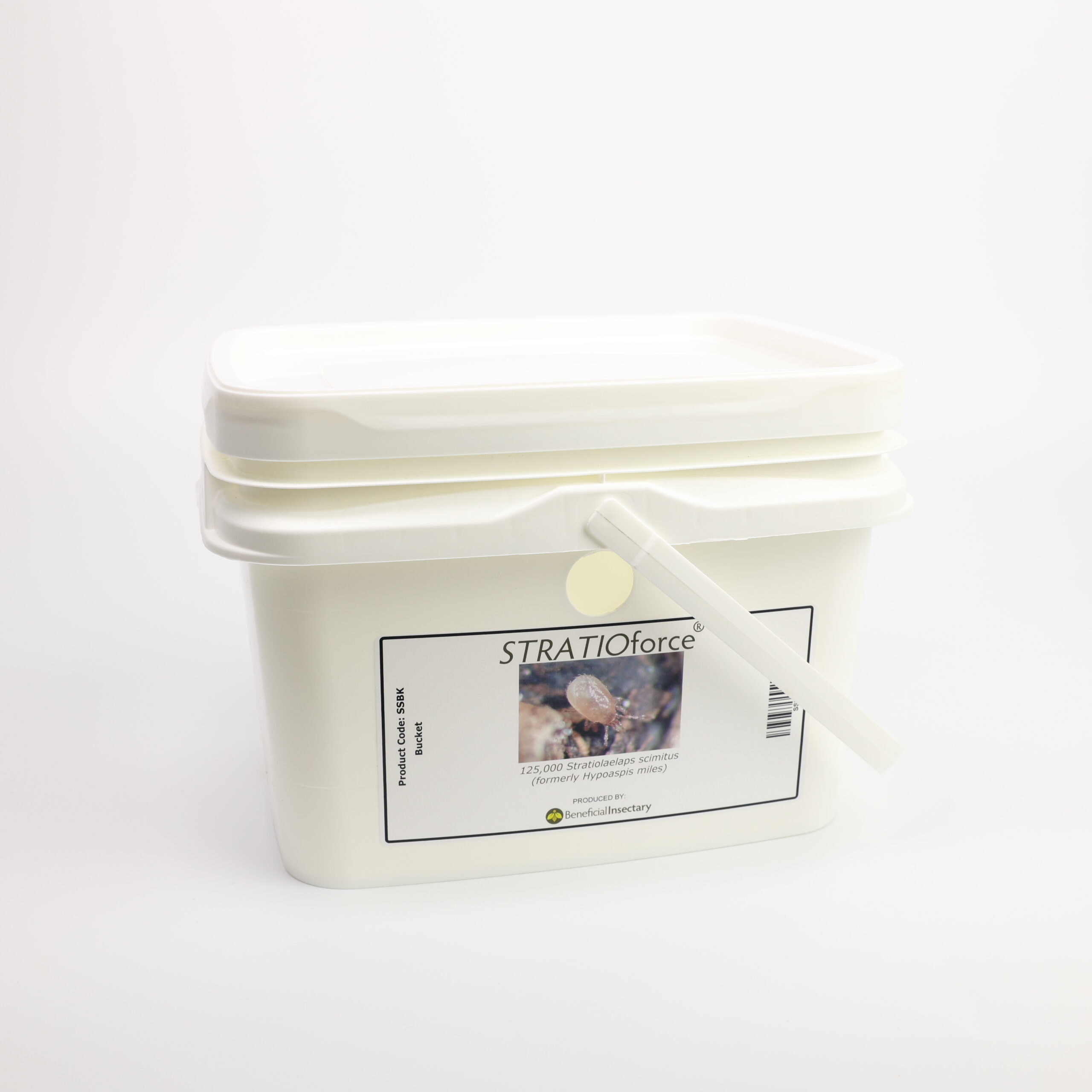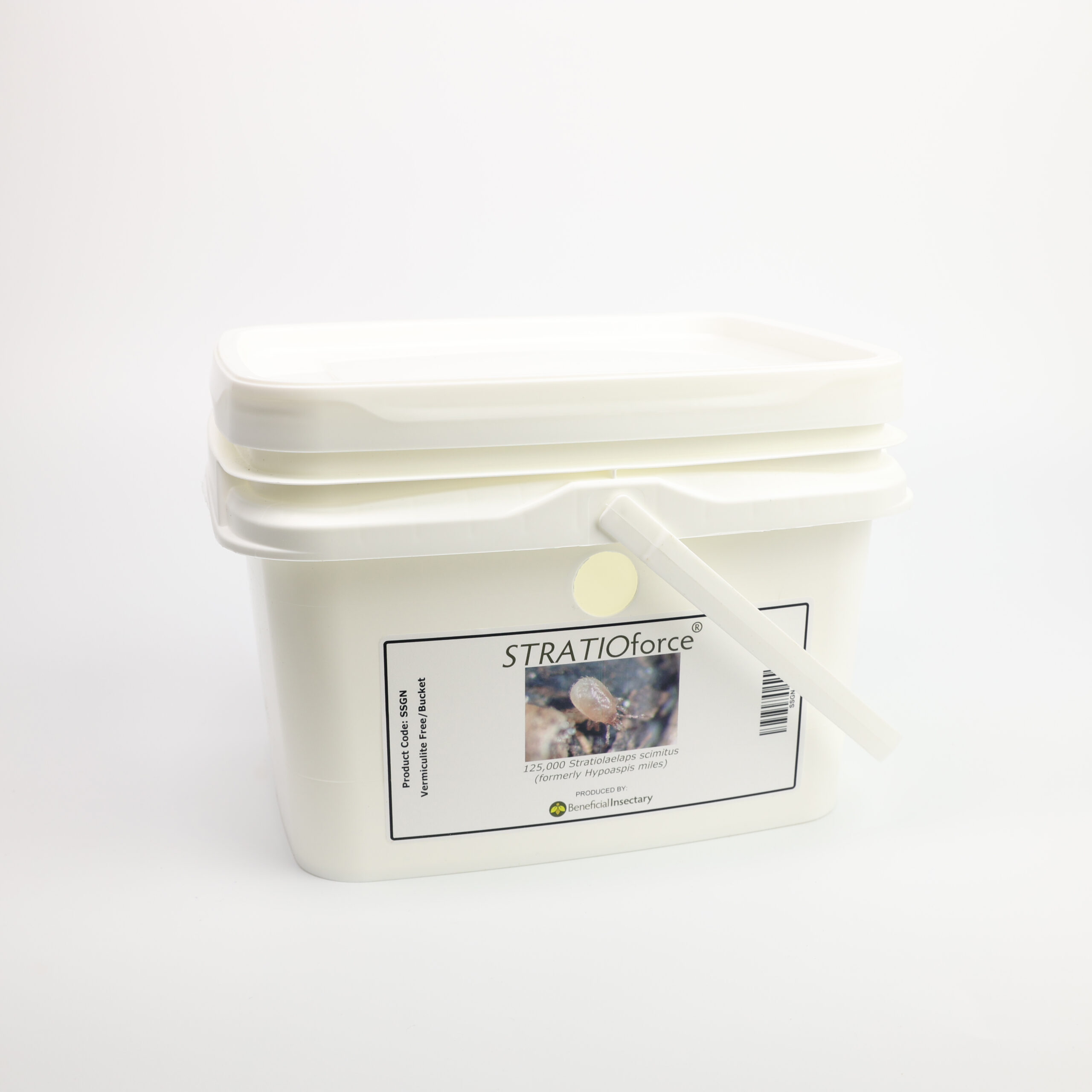STRATIOforce™
STRATIOforce™
Stratiolaelaps scimitus
A predatory mite that is used for the prevention, control and management of fungus gnats and certain thrips species that pupate in the soil/on the ground.
Fungus Gnat spp.
Thrips spp.
Some Shore Fly spp.
Springtails
And Other Soil Pests
Vegetable Crops
Soft Fruits
Ornamental Crops
Hemp/Cannabis
Greenhouses
Indoor Facilities
Fields
Gardens






Their affinity for eating thrips pupae is an underrated benefit of using these mites. Using only S. scimitus can reduce western flower thrips populations by 43%.
This product can be stored at 50-60°F for about two days. The bottles and bags are shipped with a food source. Once that runs out, they will start attacking each other. It is best to store the bottles on their side and filter paper up (this provides more surface area for the mites).
Gently rotate the bottle to distribute the mites evenly within the carrier to release from bottles. Unscrew the lid and remove the filter paper. Place the lid back on top and tap the mites out of the bottle evenly onto the soil. These mites should be released onto dirt and gravel floors, around greenhouse weeds, under benches and ground covers, and any place fungus gnat larvae and pupae or thrips pupae and pre-pupae may develop. Concentrate their bulk at release points near the most heavily infested or active breeding areas. Leave the empty bottle with the cap removed in the treatment area for 24 hours after release to ensure all mites have exited.
To Release from Bags:
Gently rotate the bag to distribute the mites within the carrier. Next, open the bag at the seal and sprinkle the contents evenly onto slightly damp growing mediums, soil, or ground cover using the dispensing scoop. Use a higher concentration in hot spots.
Place a slice of potato in the soil, as this will attract both fungus gnat larvae and their predators. S. scimitus can sometimes be found on or near the potato slice after a couple/few days. However, what may be the best way to tell if they’re in the crop and doing their jobs is the reduction of pests a few days after release.
These mites can’t handle dry soil, so use in certain herbs, cacti, and succulents may not be an option. They also don’t take being on Rockwool very well, so they can’t be used in hydroponics.
Live-Product: Beneficial Insectary strives to guarantee the live delivery of the freshest organisms to our customers. We offer replacements or credits for any compromised shipments to our customers that report any issues or concerns within 24 hours. These issues or concerns must be relayed before releasing any organisms that are suspected of having viability issues. Please do not discard the product. You may be requested to return the shipment for further analysis.
Establishment of BCAs in Crop Settings: Many variables can negatively or positively impact BCA and pest populations in various crops we work with (pesticide applications, watering practices, improper storage methods, cultural/physical/mechanical controls, etc.). Some beneficial organisms require a steady pest presence as a food source to build their population. Others may require alternate food sources, such as pollen or nectar as an example. While other BCAs have specific photoperiod requirements for success. Due to these variables, we cannot guarantee the long- or short-term establishment of the BCAs we sell after the release of the organism(s). We will not offer refunds, discounts, or other credits on products that have already been released. Please adhere to our “Live-Product” disclosure.
PRODUCT RELEASE METHOD
PRODUCT SPECIFICATIONS
PRODUCT | PACKAGE SIZE Filler/Carrier | LIFE STAGES | PRODUCT CODE |
|---|---|---|---|
STRATIOforce™ – 12,500 | 16oz Bottle with Peat Moss/Vermiculite | Adults | SS12 |
STRATIOforce™ – 25,000 | 1 Liter Bottle with Peat Moss/Vermiculite | Adults | SS25 |
STRATIOforce™ – 25,000 | 1 Liter Bottle w/ Peat Moss | Adults | SSN |
STRATIOforce™ – 125,000 | 5 Liter Tub with Peat Moss/Vermiculite | Adults | SSBK |
STRATIOforce™ – 125,000 | 5 Liter Tub w/ Peat Moss | Adults | SSGN |
RELEASE RATES
CLASSIFICATION | RELEASE INFORMATION |
|---|---|
Preventative | 10 per sq. ft. |
With Existing Pest Populations | 30 per sq. ft. |

CANNABIS ALERT: Release rate suggestions on these pages are usually not sufficient for cannabis growers. For cannabis release rates contact us.
Life Cycle
EGG & LARVAL STAGES
- Eggs are laid in the soil and hatch into larvae in 1-3 days
- Larvae are small, translucent, and only have 6 legs
NYMPHAL STAGES
- Nymphal stages larger, darker than larvae, and have 8 legs
- Nymphs closely resemble adults but smaller
ADULT STAGE
- Tan in color, approximately 0.25mm long
- Can be found moving rapidly over the soil surface
- Lives, eats, and reproduces in the soil medium
- Females produce 2-3 eggs per day
